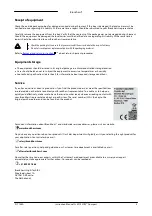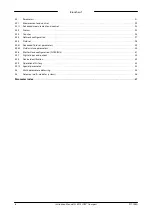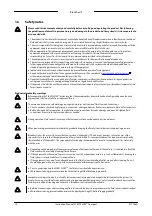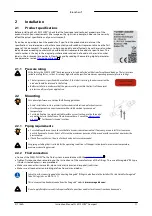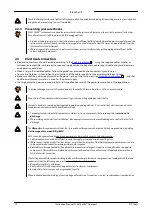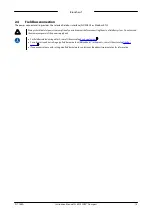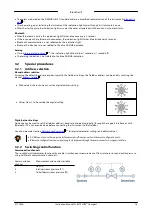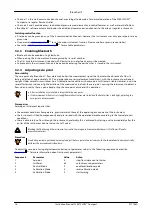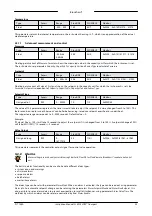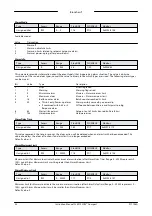
Bronkhorst®
Instruction Manual FLEXI-FLOW™ Compact
9.17.158A
16
·
Channel 1 is the main communication channel, providing all parameters for normal operation of the FLEXI-FLOW™
Compact as a regular flow controller.
·
Channels 2 and 3 provide access to additional pressure measurement and control features, as well as alarm definitions.
·
Bronkhorst® software automatically adds the additional communication channels to the array as regular instruments.
Switching control function
·
A setpoint can be given on any of the 3 communication channels. However, the instrument uses only one setpoint at any
given time.
·
Use parameter
to set the main instrument function (flow controller or pressure controller).
·
See section
for available parameters.
3.2.3
Enabling Bluetooth
·
Bluetooth can be enabled using FlowSuite.
·
When pairing the instrument can be recognized by its serial number.
·
The first time the instrument is paired with FlowSuite, a six-digit passkey must be created.
·
Subsequently, the instrument can only be paired by entering the passkey that is stored in the instrument.
3.2.4
Adjusting zero point
Zero-stability
The zero point of a Bronkhorst® flow meter/controller (the measurement signal that indicates the absence of a flow) is
factory adjusted at approximately 20 °C and atmospheric pressure (ambient conditions), with the instrument positioned
upright. Under normal circumstances (i.e. at stable process conditions), the zero point will remain stable. However, over time
several factors can induce a slight deviation of the measured value from the zero point, causing the instrument to detect a
flow when in reality there is none. Readjusting the zero point eliminates this deviation.
·
After installation or relocation, always check the zero point.
·
If the instrument still detects a (steady) flow while all valves are closed and the fluid system is leak tight, adjusting the
zero point is recommended.
Prerequisites
Zeroing an instrument requires that:
·
the ambient conditions (temperature, pressure) match those of the operating environment of the instrument
·
the instrument is filled homogeneously and pressurized with the operational media, according to the typical process
conditions
·
there is absolutely no flow through the instrument; preferably, this is achieved by closing a valve immediately after the
outlet of the instrument (control valve, shut-off valve)
Blocking the flow through the instrument is essential; zeroing an instrument while there is still a flow will lead to
measurement errors.
Procedure
FlowSuite provides a quick and easy way to adjust the zero point of an instrument; the
Autozero
function automatically
performs the procedure described here.
To adjust the zero point using digital communication, set parameter values in the following sequence (see section
for more information about instrument parameters):
Sequence #
Parameter
Value
Action
1
Setpoint
0
stop flow (close control valve)
2
Init Reset
64
unlock secured parameters
3
Control Mode
9
enable calibration mode
4
Calibration Mode
0
reset calibration mode
5
Calibration Mode
9
start zeroing
22
35
21


